There are many alarming indications of rapid loss of biodiversity in the UK. In arable landscapes the rapid shift towards unsustainable intensive farming has decimated native hedges. Soils and rivers have been damaged by the heavy use of herbicides and chemical fertilisers. On many upland farms, over-grazing by sheep has created silent, closely cropped expanses totally devoid of wildflowers and wildlife. As a result the margins – hedges, road verges and the banks of streams – have become valuable areas for conservation and habitat restoration.
A slow transformation in the ecological management of public and private landscapes over the past 30 years is steadily but positively addressing these concerns, but much restoration depends on the availability of wild seed and the detailed knowledge required for successful after care. Seeds carry the locked in potential to transform the landscape.
Designing a meadow can be a fulfilling if challenging thing. But meadows are proven to support huge biodiversity and be excellent for pollinators. Even if you don't want to create a meadow in its entirety, or don't have the space for one, you can still bring a little sense of meadow to your plot, whatever its size.
Here are a series of meadow plants, selected from Manor Farm as well as a garden around a modernist house in California. These are flowers which look stunning in the height of summer, but also die back to give structural interest too. Read our piece on why you should cut down on mowing the lawn in order to increase the biodiversity in your garden.
Don't miss our expert tips on designing a meadow garden.
16 key meadow plants
Anacamptis pyramidalis (pyramidal orchid)
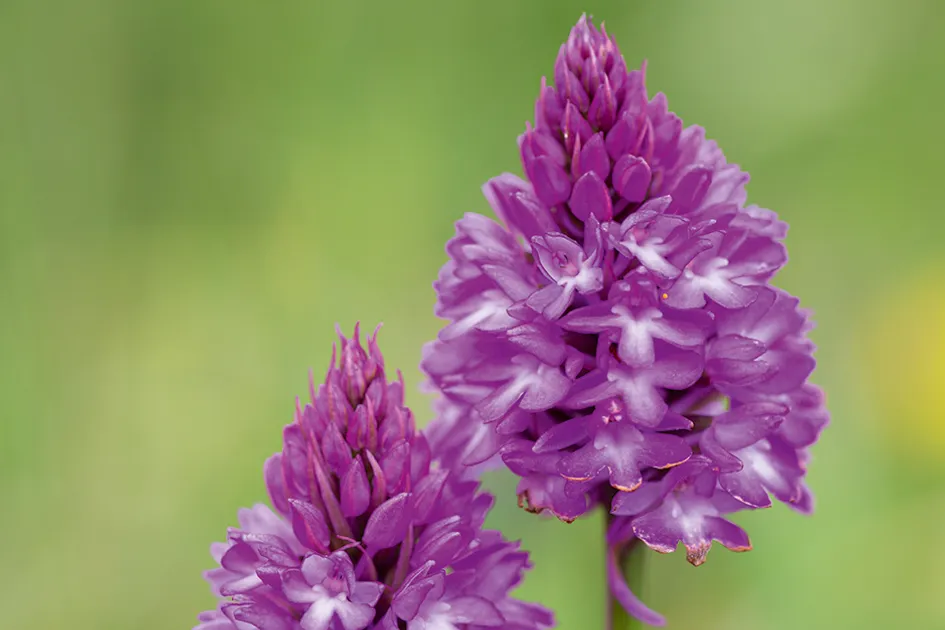
Once common in old meadows on chalk and limestone slopes, it has narrow unspotted leaves, a dense, brilliant pink flower spike and a musky fragrance attractive to butterflies and moths. The wildflower grows up to an average height of 10 to 25cm and the colour varies from purple to pink and occasionally white. It is the county flower of the Isle of White where it is easy to spot in meadows in June and July when it flowers. RHS H5.
Leontodon hispidus (rough hawkbit)
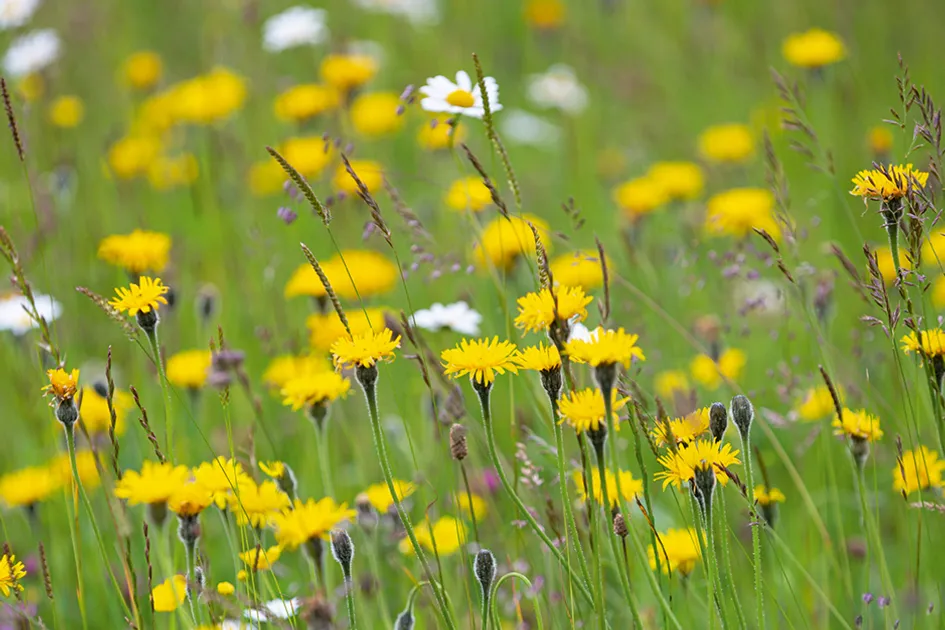
This meadow flower looks much like a dandelion but it doesn't have the milky juice in the stem. The leafless stems are very hairy and swell slightly at the top, with the hairs branched into a T or Y shape. 40cm. The blooms of this wildflower are out from May to October and it is resistant to heavy chopping. It has a sweet, honey-like smell and pollinators love it. RHS H5.
Orobanche elatior (knapweed broomrape)
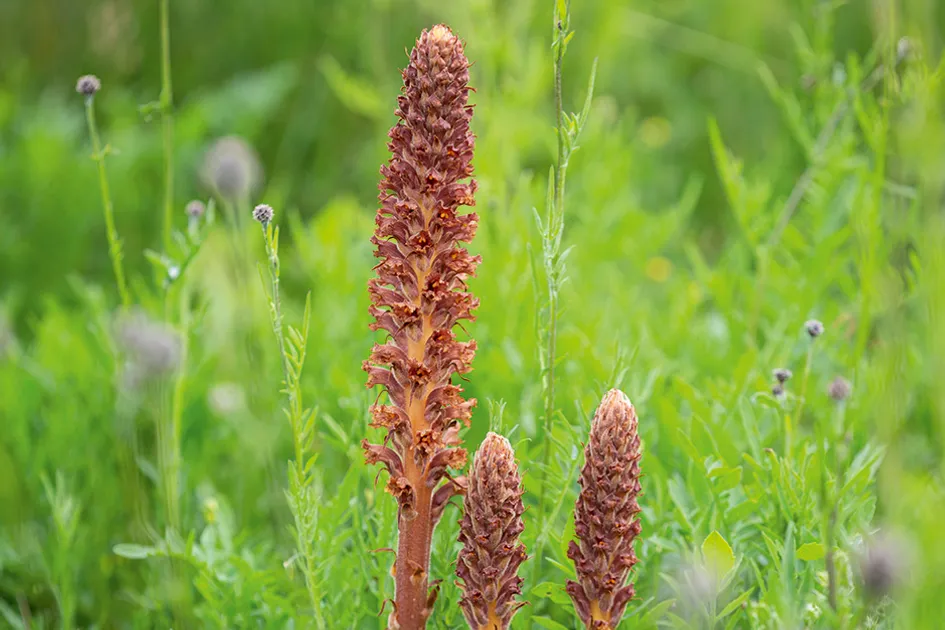
A fleshy perennial parasite (mainly on Centaurea scabiosa (Greater Knapweed)) that has no need of its own chlorophyll so the whole plant is a honey-yellow, its flowers tinged with purple. This meadow wildflower is one of nine native species of broomrapes to appear in the UK. It has a thick stem and the seeds often lie dormant in the soil for years until stimulated to germinate by compounds generated from other plant roots. 70cm.
Trifolium pratense (red clover)
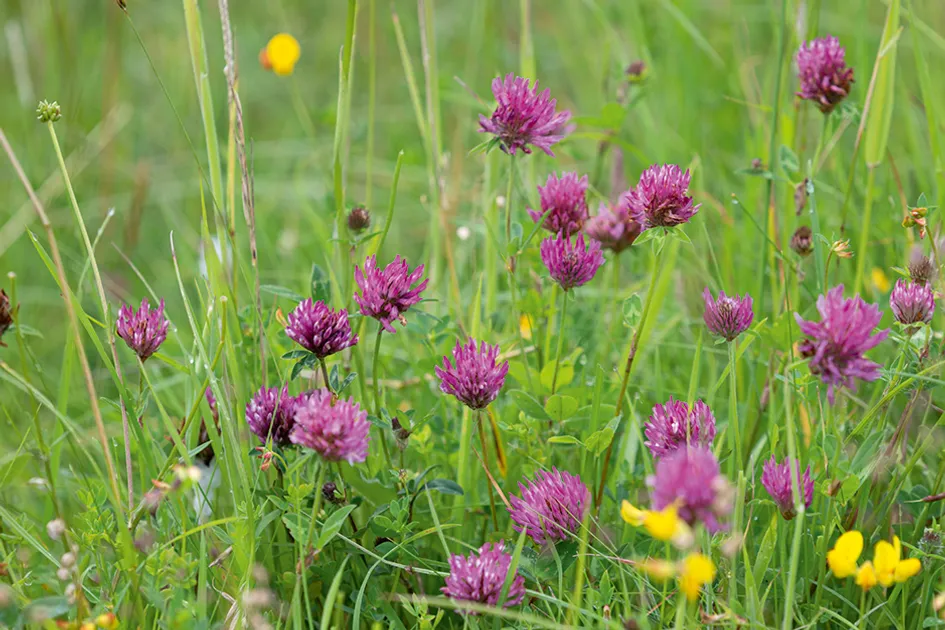
A common but important species with flowers rich in pollen and nectar. Flowering profusely from late spring into autumn it feeds insects when there is less pollen and nectar for them to forage. 50cm. It is good for nitrogen fixation, which helps with soil fertility. Bees love it and it can be sown at any point in the year. 30 to 40 cm. RHS H7.
Dactylorhiza fuchsii (common spotted orchid)
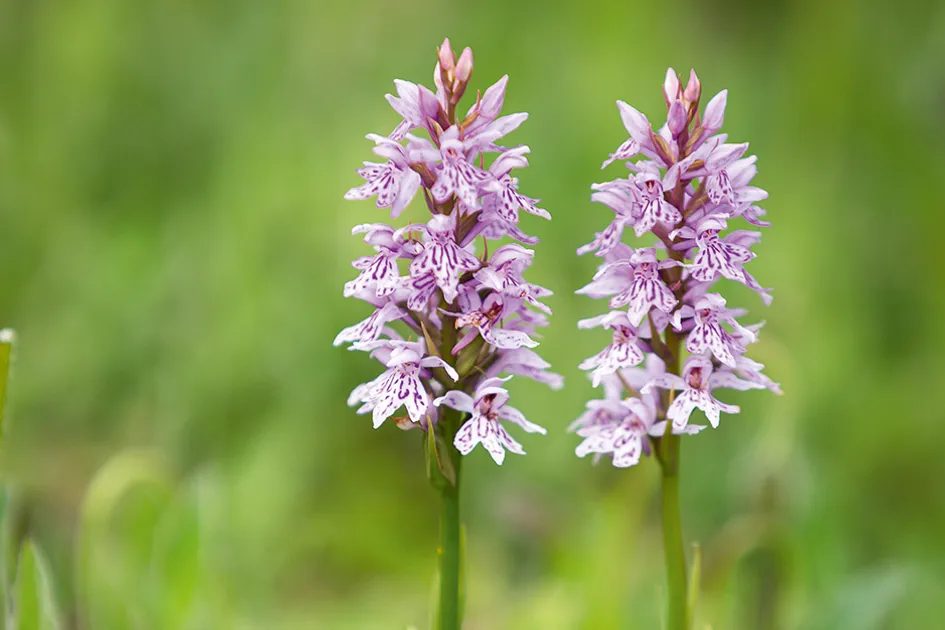
Identified by heavily spotted, broad leaves and a three-lobed flower lip, this is perhaps the easiest of all UK orchids to spot. It is variable, occurring in shades of deep mauve to pale pink with a differing density of darker speckled markings. You'll see it in damp grassland, woods, scrubs and fens. The county flower of West Lothian. 60cm. RHS H5.
Silene vulgaris (bladder campion)
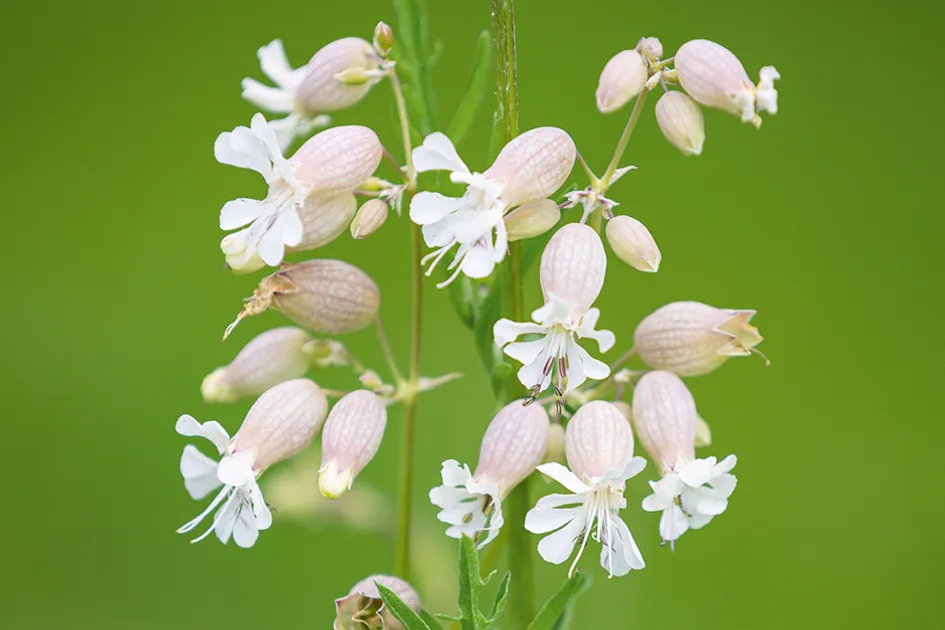
At home in woods and hedgerows, this wildflower emit a clove- like scent at dusk and the young shoots and roots are delicious in salads. You'll also find this flower in north America too. Its distinct inflated calyx is what instantly identifies the bladder campion, and is where this meadow flower gets its name. 60cm. RHS H6.
Centaurea nigra (common knapweed)
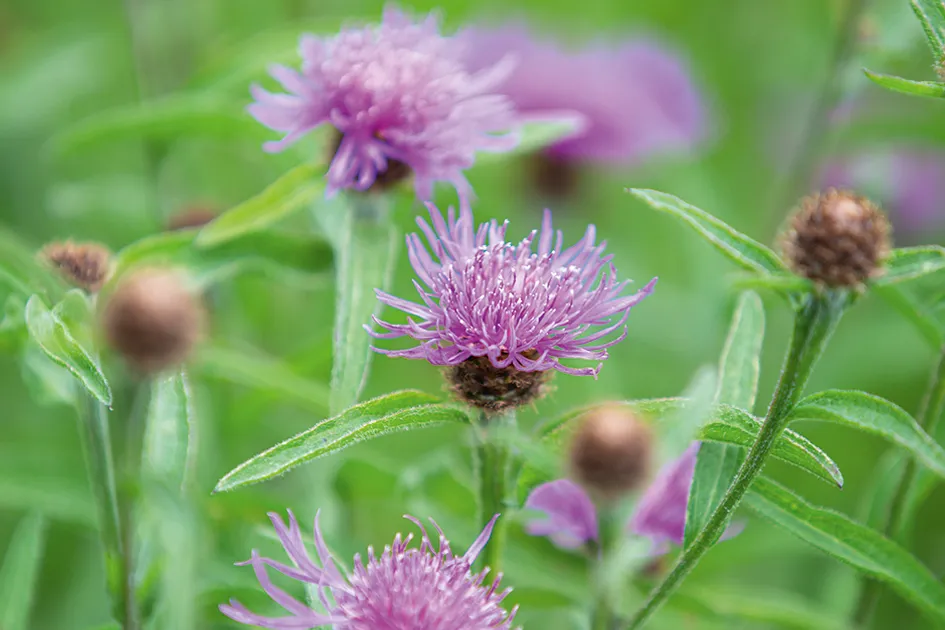
A long-flowering nectar plant that attracts many pollinators, this wildflower is very common throughout the UK and is loved by pollinators. It also provides food for birds too. It looks a little like a thistle, and can be identified by its black/brown flower head. It flowers from June to September. 75cm. RHS H6.
Cruciata laevipes (crosswort)
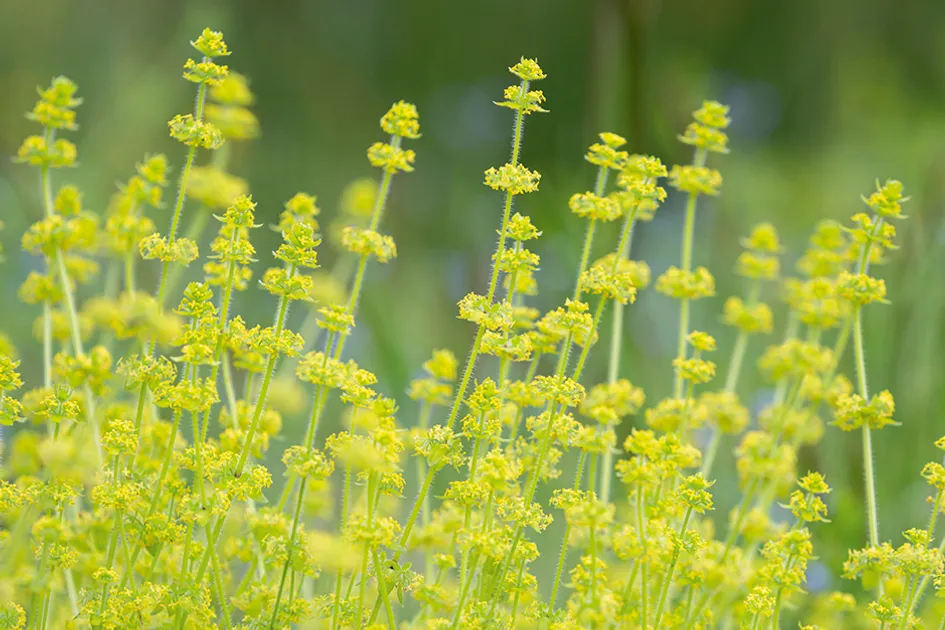
Found mostly on lime, this tufted and softly hairy wildflower perennial has tiny, fragrant, yellow flowers held in whorled clusters. Likes moderately fertile, well-drained, neutral or calcareous soils and the roots offer a red dye. The flowers, which appear from April to June, emerge all the way up the stem. The seeds are best sown in meadows in August. 60cm.
Filipendula vulgaris (dropwort)
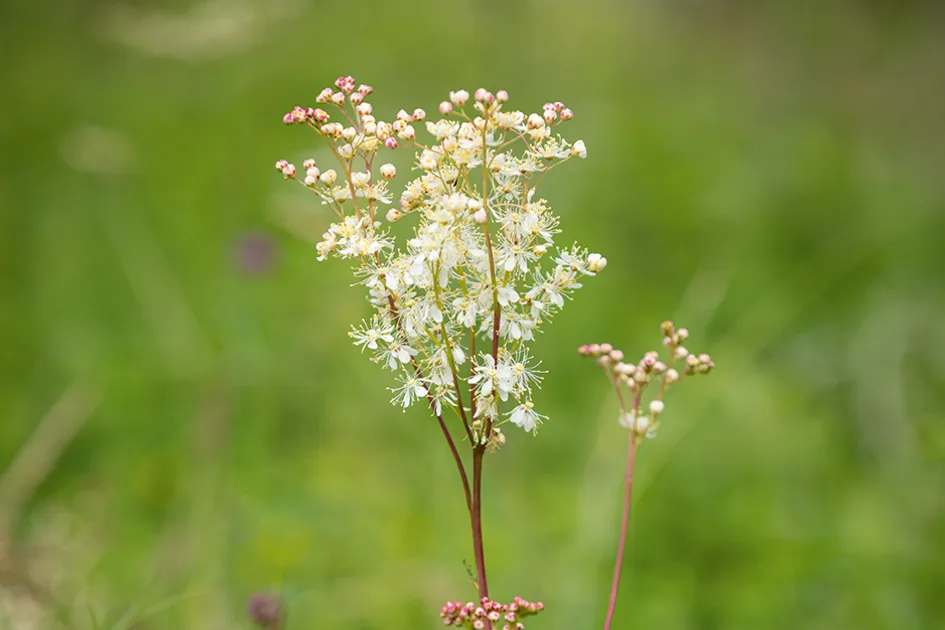
Pinkish buds followed by fluffy cream flowers and fern-like foliage and is more drought tolerant than its relative meadowsweet. 45cm. RHS H6, USDA 3a-9b.
Rhinanthus minor (yellow rattle)
A semi-parasitic annual wildflower that piggy backs its nutrition from grasses, weakening their growth and so helping to create a less competitive environment where other perennial wildflowers can establish. Creamy white flowers are often tinged pink or red and the plant can be found on rough grasslands and meadows, where it can persist for years. It does, however, require cutting or grazing. Seed should be sown fresh in autumn. 50cm.
Geranium pratense (meadow cranesbill)
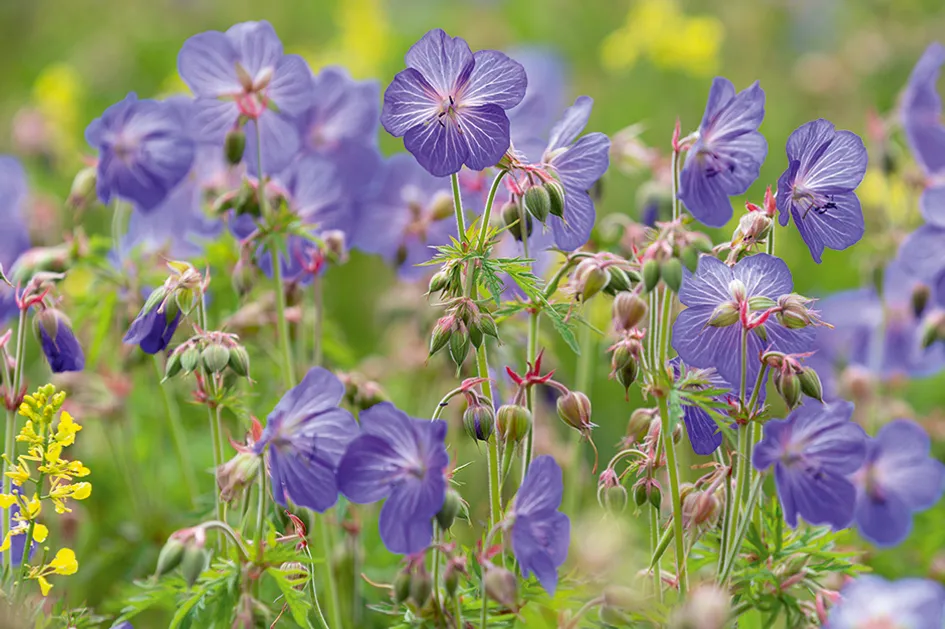
Often seen growing on Cotswold verges, preferring limestone it also tolerates a neutral pH. Bees gorge on its nectar. Five petalled flowers , with hairy stems and deeply lobed foliage. Flower appear early to mid-summer. This meadow plant is also perfect for borders and cottage gardens. 90cm. RHS H7, USDA 4a-8b.
Hippocrepis comosa (horseshoe vetch)
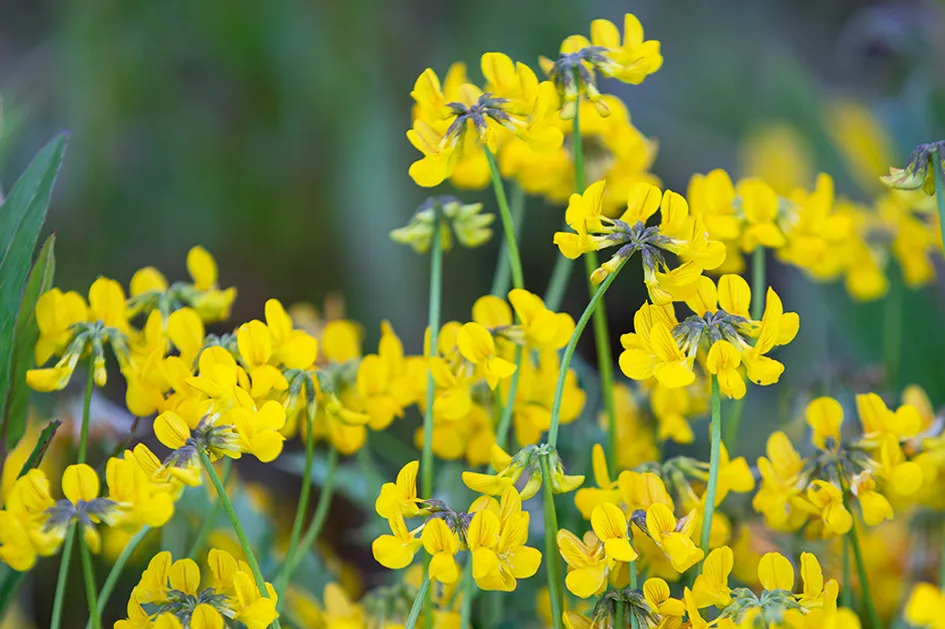
A striking member of the pea family that forms a trailing mat, abundant with golden flowers. This is a low, spreading grassland perennial. The flowers are highly scented and bloom throughout May and early June. It likes bare chalk areas such as new road cuttings and quarries. Bees, butterflies and moths all love it and it is the exclusive food for the Adonis Blue Butterfly and the Chalkhill Blue. The meadow flower is also the major food plant of the Dingy Skipper Caterpillar. 40cm.
Reseda lutea (wild mignonette)
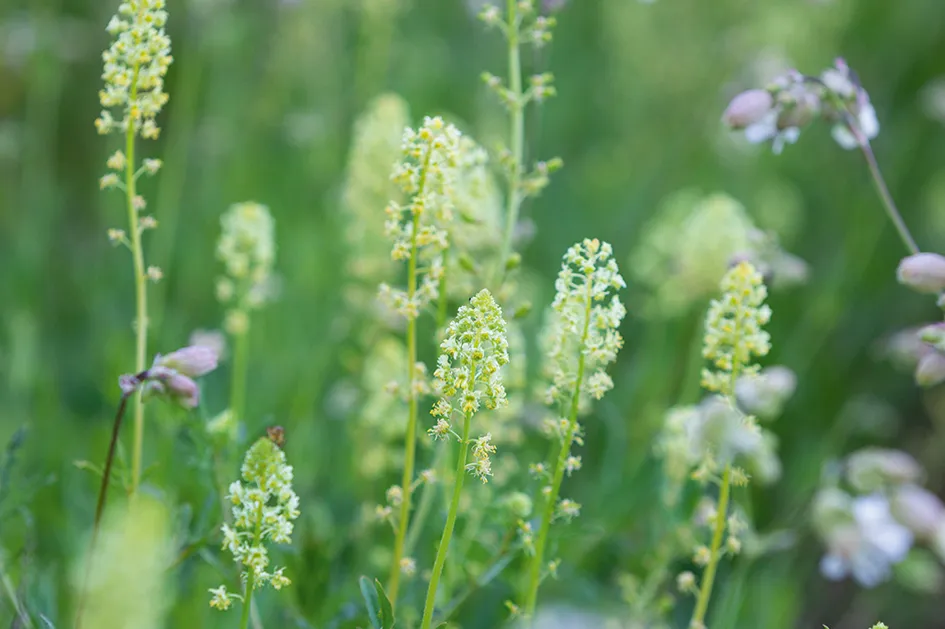
A tall, mildly fragrant biennial that favours well-drained soils and open habitats. Its leaves and pale, greenish-yellow flowers have long been used to create a yellow dye called weld. The best time to see it is in May and June and they will stand out in grass, where they are traditionally found. Leaves are eaten by the Cabbage White butterfly, Bath White and the Orange Tip. 75cm.
Tragopogon pratensis (goat’s beard or meadow salsify)
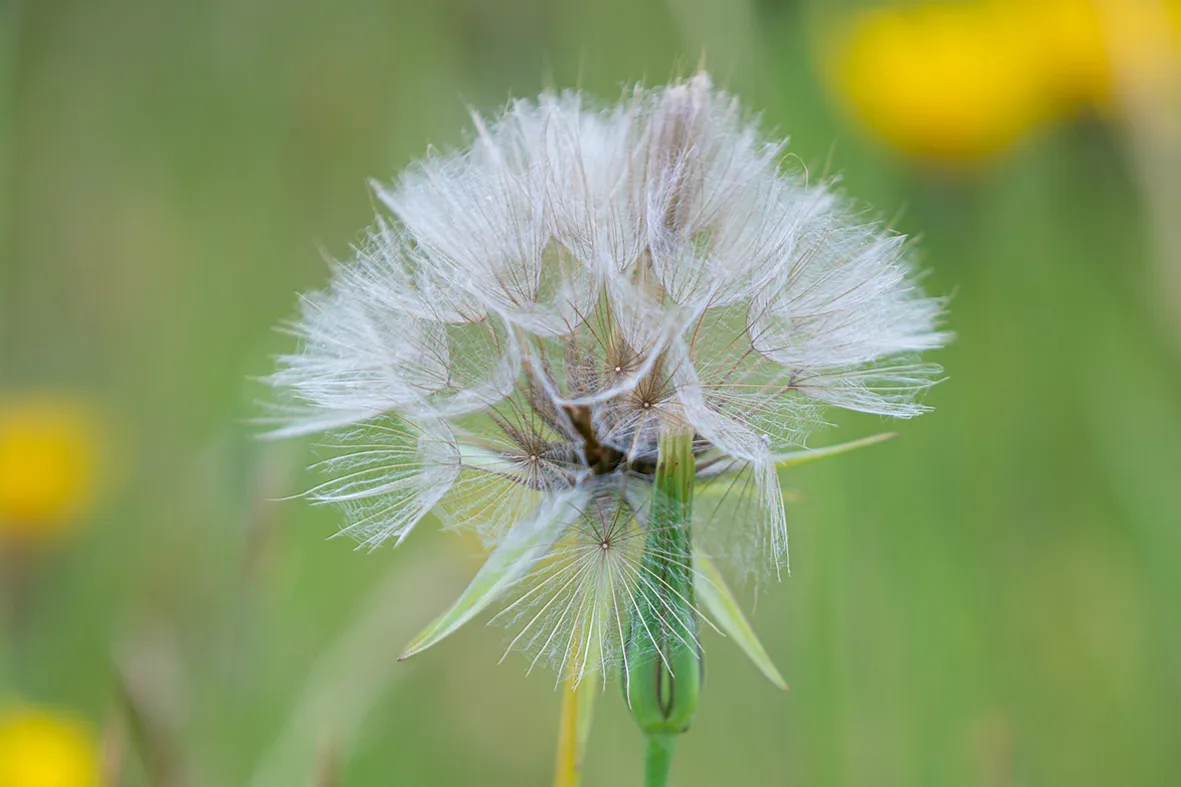
Another meadow flower that's very similar to the dandelion, the yellow flowers of this biennial open at sunrise and close around midday. It flowers between June and October and its roots and buds are edible and have a similar flavour to that of oysters. 1m. RHS H7, USDA 4a-8b.
Briza media (quaking grass)
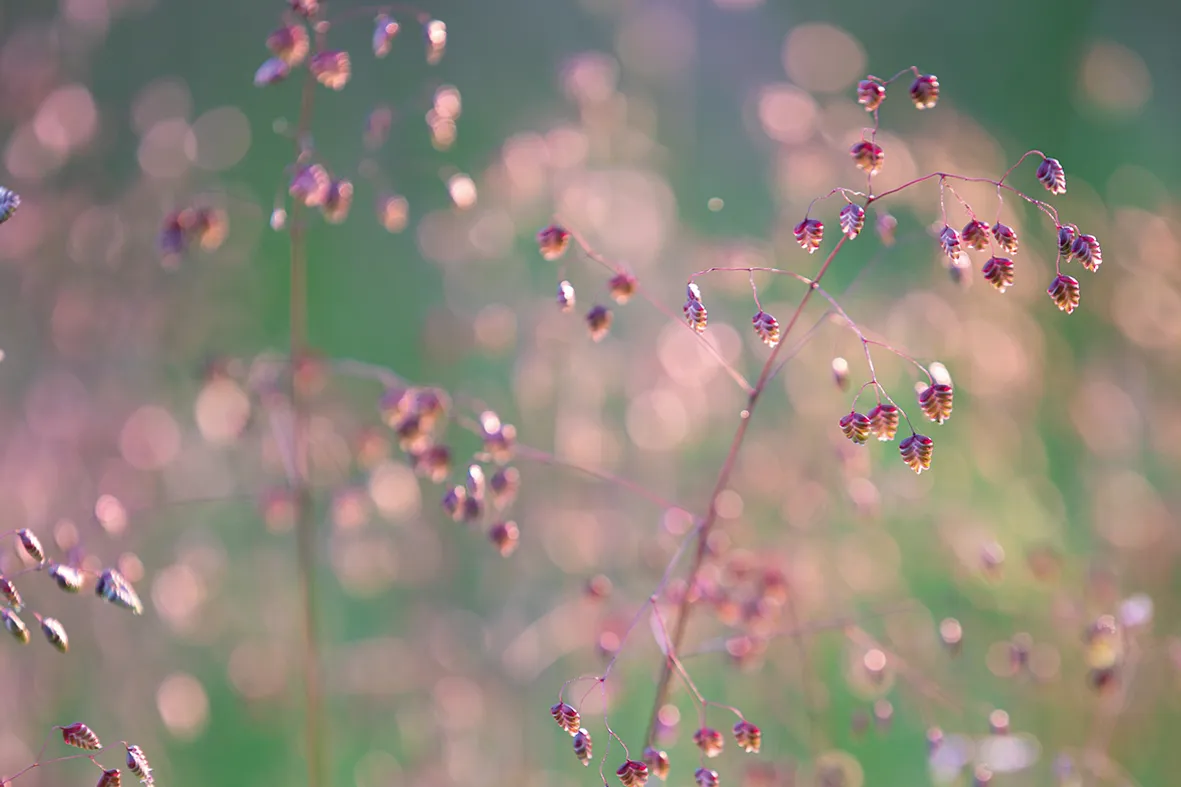
A delicate grass that favours well-drained slopes and calcareous soils. This evergreen has green-purple flowers, which fade to buff and the flowers are great for drying. Flowers between May and August. The grass dies back in autumn and fresh growth remerges in spring. These meadow plants have a lovely way of quaking in the breeze and would be a perfect wildflower for any meadow area. 90cm. USDA 4a-8b.
Ophrys apifera (bee orchid)
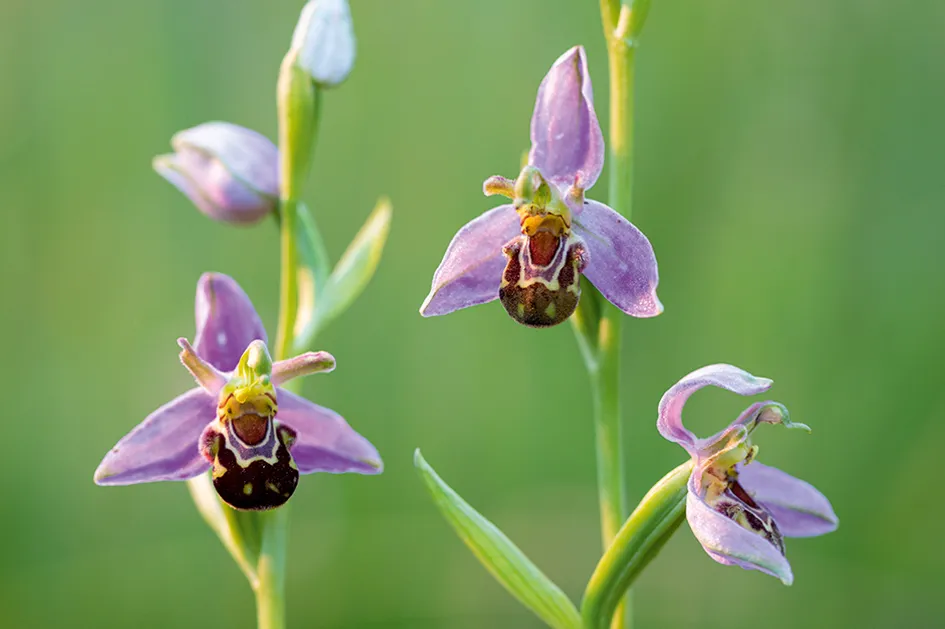
Named because the flower of this orchid looks remarkably like a bee. The flower also emits a smell that replicates a female bee scent and the flower is hairy to touch, much like a bee too. It's all in order to attract male bees. The meadow flower occurs on a variety of habitats, including woodland margins and scrub. 30cm.
Seven structural meadow plants
Juncus effusus
This rush intermingles with Juncus patens ‘Carman’s Gray’ to provide a green matrix in damper areas throughout the year. 1.2m. USDA 4a-9b.

Muhlenbergia capillaris Regal Mist (= ‘Lenca’)
Drifts across the meadow just as most other perennials are fading out, surprising with a last burst of pink. 90cm. USDA 5a-9b.
Ceratostigma willmottianum
Red stems provide an interesting contrast against the grasses after it loses its leaves. 1m. RHS H4, USDA 5a-9b.
Cistus x skanbergii
A low-growing rock rose with a profusion of pink flowers in spring. 80cm.
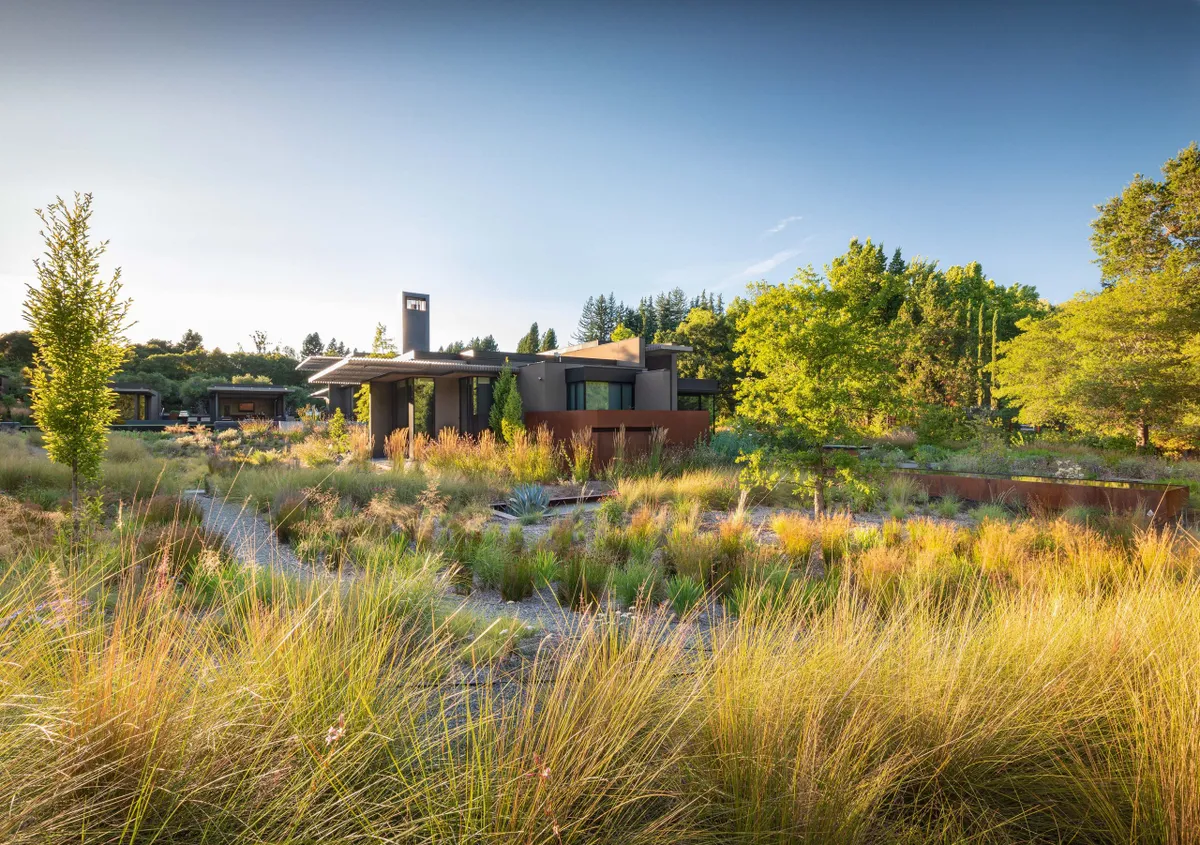
Artemisia ‘Powis Castle’
Benefits from some trimming in winter, but can provide some structure. 60cm. AGM*. RHS H3, USDA 6a-9b
Salvia leucophylla xSalvia clevelandii ‘Pozo Blue’
This deep-blue cultivar stays below waist level, is very drought-tolerant and highly scented in hot weather. 1.2m. USDA 8a-10b.
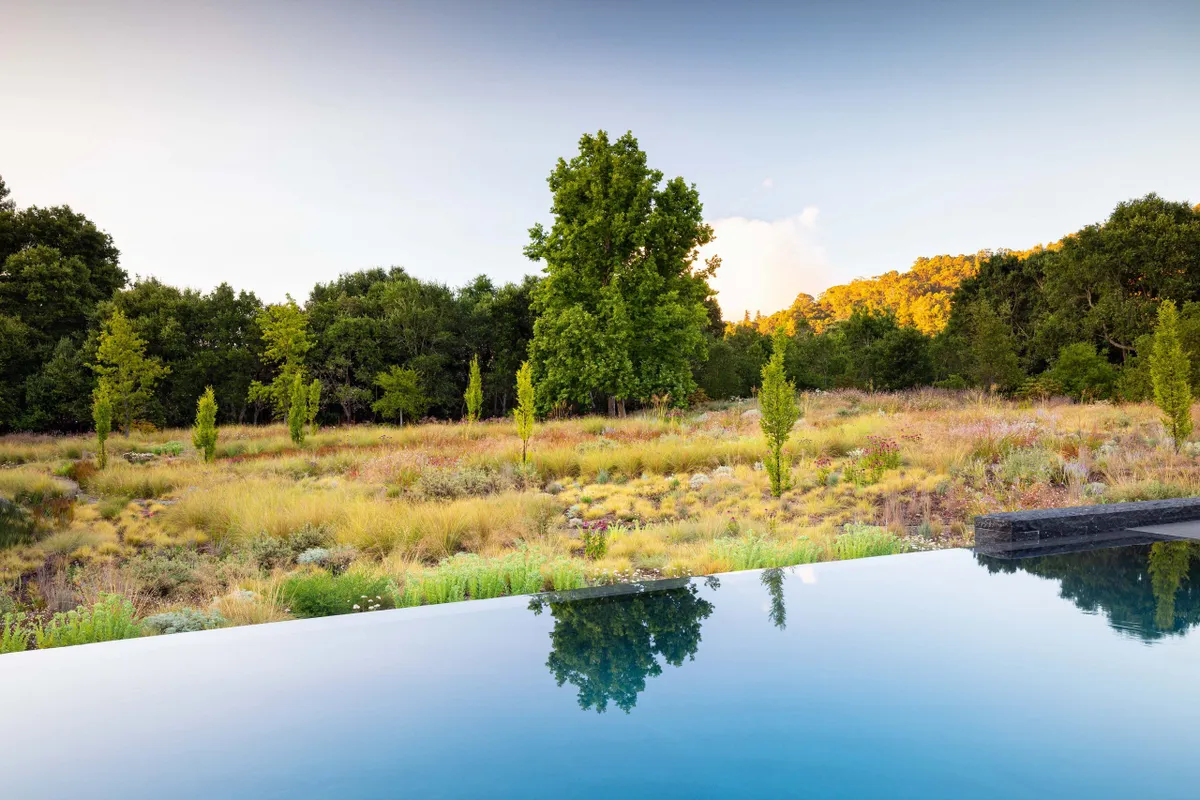
Eriogonum giganteum
Giant California buckwheat with white flowers in May that fade to rust in autumn. It’s one of three species of Eriogonum used in the garden along with Eriogonum fasciculatum var. foliolosum, which has white pom-poms that fade to rust, and, the smallest of the three, Eriogonum grande var. rubescens, with pink-red flowers. All provide excellent habitat for birds and pollinators. 1.2m.